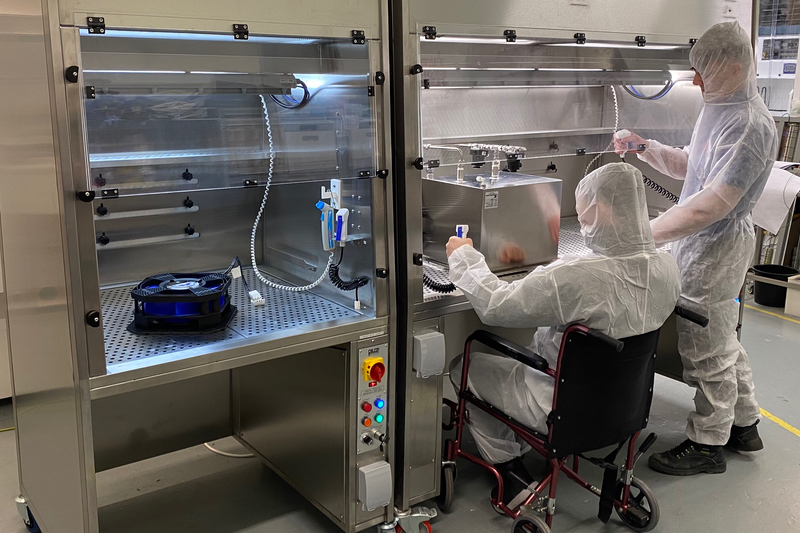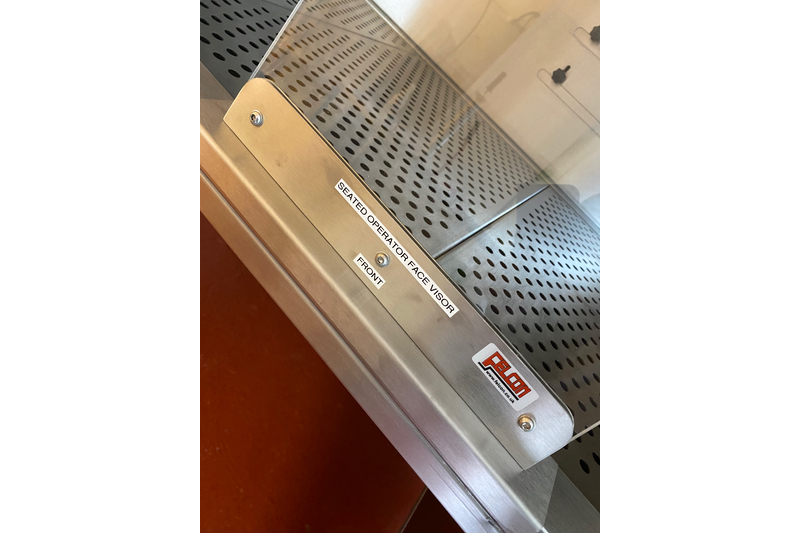Wet processing equipment is commonly used in various industries, including semiconductor manufacturing, pharmaceuticals, and food processing.
In the world of wet processing, accessibility is a crucial factor that unfortunately often goes overlooked.
Felcon aims to be a pioneer in adjusting wet process equipment by prioritising inclusivity and accessibility for all users, particularly for wheelchair users in laboratories and the semiconductor industry.
Standard equipment is often designed for standing users
This article highlights the importance of modifying wet processing equipment to accommodate wheelchair users and suggests key adjustments for improved accessibility.
Understanding the challenges
Wheelchair users face unique challenges when it comes to accessing and operating wet processing equipment. These challenges can include:
Height and reach: Standard equipment is often designed for standing users, which nominally ranges from 850 to 950 mm. Standing height makes it difficult for wheelchair users to reach controls or see into containers.
Mobility: Wheelchair users may have difficulty moving around in spaces designed for standing workers, especially if the floor is wet or uneven. The Managing Director at Felcon mentions: “The inclusivity is paramount. With a close family member who is a wheelchair user, it's sometimes difficult to explain to non-wheelchair users the accidental exclusion. Either way.”
Safety: Wheelchair users are at a higher risk of injury from spills or splashes because of their proximity to the ground.
It's sometimes difficult to explain to non-wheelchair users the accidental exclusion
Key adjustments for accessibility
Height and wheelchair adjustments: One of the most effective ways to increase the accessibility of wet processing equipment is to ensure controls are reachable and work areas are visible for wheelchair users.
This will enable accessibility in reaching controls and allow comfortable access to the work area.
It is important to not only adjust the height of the bench but also the distance so that the user can get closer to the work area comfortably.
Additionally, it is crucial to recognise the significance of teamwork (Figure 1).

Figure 1: Wheelchair and standing users at the same bench
Clear floor space: At Felcon, we emphasise collaborating closely with our clients to plan equipment placement, facilitating easier and after movement for wheelchair users.
Felcon Sales Manager says: "The more information we receive at the quotation and design stage, the better we will be able to help find the best solution for each user group."
Safety features: Incorporating additional safety features can also make a big difference. This could include things like splash guards to protect wheelchair users from spills and splashes, or emergency stop buttons that are within easy reach from a seated position (Figure 2 & 3).

Figure 2. Seated operator face visor

Figure 3. Close-up of DI and N2 guns with multi-height locations for seated and standing user
Conclusion
By making these adjustments, Felcon strives to make wet processing equipment accessible to all users. In doing so, promoting inclusivity and diversity in the workplace. After all, everyone should have the opportunity to contribute their skills and talents.
These suggestions are not exhaustive and may not apply to everyone. It is crucial to discuss any specific requirements or challenges with everyone. By being creative and considerate, we can make the field of wet processing accessible to all.

